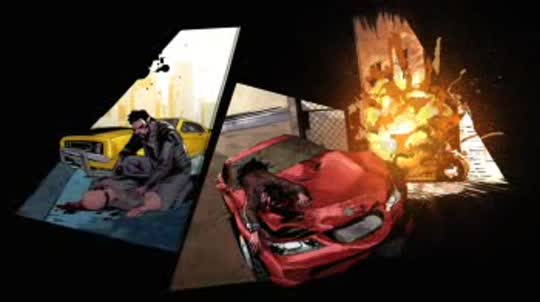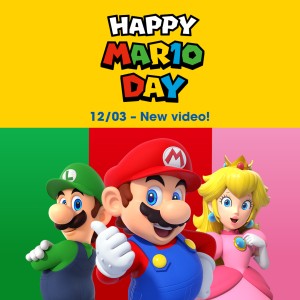Get the inside track on Driver Renegade 3D with our interview
21/09/2011
Driver® Renegade 3D lets you take to the streets of New York City like never before - as former NYPD undercover cop John Tanner returns with unstoppable rage. Ubisoft’s Nouredine Abboud explains why this game isn’t one for the kids…
What can you tell us about your role in the development of the title?
I’m the Senior Producer of Driver Renegade 3D, so basically I’m overseeing the production, managing designers, coders, and graphic artists. In that, I have two big roles; the first one being that I need to make sure that we have a game that appeals to the players. This can imply taking decisions in the design to make sure that - even if it appeals to us - it also appeals to the players.
The second one is to make sure that everyone works together, because if you’re trying to make a Driver game that is a little bit different from the others, a little bit more violent, a little bit more aggressive, everyone can have his own definition of it. So for instance, one of my jobs was to come up with something that stays true to the roots of the game but at the same time brings something new, which was one of our major challenges.
Did you have any previous experience working with 3D?
I personally didn’t, but Ubisoft is a big company and we had some experience with 3D because of the Avatar game. That was made by a different team than the one that worked on Driver, however we have people in our company who make sure this knowledge is shared between project teams.
Apart from that, within our team we’ve done a lot of trial and error, as you can imagine. There are many things you need to consider with 3D, for example you need to make sure something is fun more than once – something coming at you may be fun the first time, for example, but loses impact if you use it all the time. Also, how do you treat the interface? Do you put it deep into the screen, or have it appear in front of it? That’s a matter of discussion, of course, and in our case we decided to focus on the 3D inside the car, and within the city, based on the tests we did.
Did you build the entire game from the ground up?
Well, the interesting thing about Nintendo 3DS is that it really brings the quality of what you can do on a portable system to a level that hasn’t been done before. This also meant we had to create every aspect of the game specifically for the system. Thankfully, as with the 3D knowledge in the company, we were able to leverage a lot of know-how from other Ubisoft teams that worked on previous driving games. But yeah, everything you see in the game, we had to build!
In a way, this game takes the player back to the roots of the Driver franchise, doesn’t it?
Indeed it does, for at least two reasons. One is the story. We’re launching Driver Renegade 3D at the same time as Driver San Francisco on Wii. The idea is that both take place at different times, and Renegade takes place between the first Driver game and Driver 2.
At the end of the first Driver, Tanner leaves the police force. We find him in a car park and he’s left the police. And at the beginning of Driver 2 he’s undercover on another side of the country. So what we’re telling here is what happened between the first game and Driver 2.
The second reason is we really tried to focus on the driving experience as opposed to getting out of the car. But that’s it for going back to the roots. In this game, we’re actually moving away from the super precise handling the series is known for, and we’re putting a lot of focus on aggressive driving.
When you play the game you notice right away that Tanner is enraged, basically things go wrong right from the start, so he’s not in a very good mood and the environment is making him even more aggressive. As a player you can fill up what we call the Rage Bar essentially by driving in an aggressive manner.
So anytime you have collisions, anytime you hit something in your environment, but also every time you drift – those actions fill up your Rage Bar. When you press a button to deplete the bar, you use the rage you built up to go faster and your car will be less easily destroyed, plus you’ll cause more damage when you hit others. So you fill it up by driving aggressively, and depleting it allows you to drive even more aggressively!
How do you feel the excitement of driving like a maniac is enhanced by the 3D?
We had the feeling that the gameplay in 3D is exciting for two reasons: on the one hand it can give you a better sense of driving in a city. I think once you’ve driven in an open world game inside a city in 3D, you’ll be less inclined to do the same in a game that’s not in 3D, as it really gives you a unique feeling of driving inside a city. I’m not saying all the combat is more exciting because it’s in 3D, it’s just that the feeling of driving and turning into different streets is really enhanced by the 3D.
It’s something we weren’t sure would be the case when we started, but as soon as we’d done a few tests we were very happy with it. In creating the game there are a lot of things we were hoping would work and this aspect really worked very well. It makes you want to discover the city in 3D.
As for the second reason, you know how in 3D sometimes stuff is coming at you, or thrown at you? The reason we decided to amp up the aggression factor in the game is because that gave us lots of opportunities to have lamp posts destroyed, or explosions and things, that look really neat in 3D!
So Tanner’s car is essentially a weapon. How did you apply that concept to the controls?
Well, we actually experimented with using motion controls, but I have to admit we couldn’t quite make it work whilst maintaining the 3D. I’m not saying other teams aren’t going to succeed at that, but in our case, we were not happy with the result. We might try again in the future, maybe we will get better at handling the 3D. But we also felt that when it comes to driving games, you need some basics, like an accelerator button and using the Control Stick or the +Control Pad for steering.
The big thing we added, which was a direct result of not using motion controls, was that we use the L and R Buttons, so that you can drift - brutally - either to the left or to the right. With this we are simulating what we wanted to do with the motion controls.
When you’re just steering, you can’t actually decide the speed at which you’re turning the wheel, but using the shoulder buttons, you can create this effect of very forcefully turning the wheel. Not only does this add a sense of realism, it also allows you to quickly drift from one way to the other. It helps you when doing a strafe attack on another car, but it also allows you to take very tight turns in narrow parts of the city.
How did you approach storytelling in the game?
Our story is told in 3D cinematics featuring 2D imagery. We wanted to tell a mature story - the game is rated 16+ for a reason - and we took a lot of inspiration from comic books such as Watchmen. So if you check the cutscenes, it looks a lot like a comic book but with layers in 3D, which makes it much more exciting as you can position which characters are in the foreground, cars are coming, you get explosions… It allowed us to enhance the emotional response you get from such scenes.
As for the story itself, we’re talking about an era where New York was not a nice place to live in. It’s changed a lot over the years, but our story takes place before all those changes happened. In our tale, New York is ruled by gang lords, all of them specialised in certain nefarious trades, like selling organs, narcotics, things like that. You are on a crusade against them, working for a senator that is trying to clean up the city. Of course, a lot of twists happen en route, but you’re essentially going after each of these gang lords.
It fits into the history of Driver and sets up the events of Driver 2. If you haven’t played the previous games it won’t matter, but if you did you will get that additional enjoyment.
Apart from the story mode, the game also features over 70 challenge missions. How would you say the balance between those aspects works out?
When we set out to make this game there were a few goals we had in mind. First of all we wanted to leverage the heritage of this franchise, but also to see what works on Nintendo 3DS. Initially we really wanted to focus on having a big story mode and not so many different additional modes, but then we felt that, since this is a portable system, there is this opportunity to have short gaming sessions, and players might also enjoy simply driving, without any story at all.
So we have a story mode, and you get the full story of Tanner and what happened to him after the original game and how he got to be where he was in Driver 2, but that only constitutes about 30% of the game. We wanted to tell a cool story but not drag it out for too long - after all there are games where if the story is incredibly long you tend to forget where you are and what happened. Too much storytelling can also diminish the sheer pleasure of driving.
In addition to that we have seven types of challenges that aren’t linked to the story, and each of them consists of about 12 different tracks. So there are 20 story-based missions and over 70 non-story-based challenges. And for these, we basically took classic racing modes and added a lot of aggression! So for example you’ll take part in a race, but the goal is actually to destroy all your competitors, or there’s a survival mode in which you need to make it to the goal but your competitors are out to get rid of you.
And since everything’s happening in a city, we’re not forced to have closed circuits, so we also have missions where you’ll have to get to a certain point as fast as you can, and you can choose your own route.
What can you tell us about the StreetPass functionality in the game?
StreetPass in Driver Renegade 3D allows you to compare your scores on the non-story challenges with other players that you pass by. It’s a pretty simple functionality, but we also think it’s one of the most powerful, as you can look at your scores for each of the challenges you’ve unlocked and also see the best scores of the people you met in StreetPass. So that makes it really easy to share your scores with your friends who are also playing the game. The data are automatically shared for all the challenges.
Is there any challenge that stands out as your favourite?
I can’t really single out any of the modes – I’d just say that this game is for anyone who has a knack for driving like a maniac through the streets of New York. If driving other cars off the road, getting attacked, causing explosions and racing on the wrong side of the road is your thing, you’re probably going to get instant pleasure from this game!
Mr Abboud, thank you very much for your time!
Driver Renegade 3D is in shops now, only for Nintendo 3DS.






